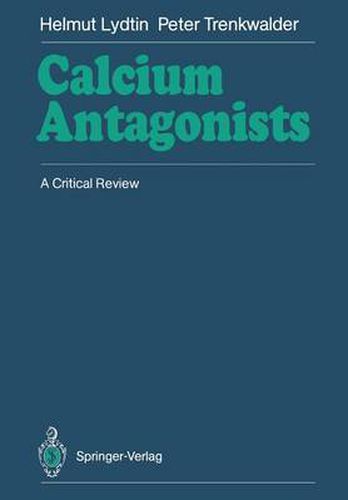Readings Newsletter
Become a Readings Member to make your shopping experience even easier.
Sign in or sign up for free!
You’re not far away from qualifying for FREE standard shipping within Australia
You’ve qualified for FREE standard shipping within Australia
The cart is loading…






This title is printed to order. This book may have been self-published. If so, we cannot guarantee the quality of the content. In the main most books will have gone through the editing process however some may not. We therefore suggest that you be aware of this before ordering this book. If in doubt check either the author or publisher’s details as we are unable to accept any returns unless they are faulty. Please contact us if you have any questions.
Our research at the Freiburg Physiological Institute over the past 25 years has demonstrated that specific calcium antagonists interfere with all physiological and pathophysiological reactions involving the heart and vessels in which an elevated inflow of calcium ions across the potential-dependent slow membrane channels into the cells is a decisive factor. From the outset, our therapeutic interest has centred on the possibility of inhibiting excessively high levels of transmembrane cal- cium influx and thereby reducing the pathogenic consequences of intra- cellular calcium overload. For example, all excessive calcium influx evokes contractile hyperactivity, which manifests itself in the myocardial fibres as hyperkinetic reactions and an uneconomic rise in oxygen de- mand and, analogously, in vascular smooth muscle cells as increased tonus and spasm. The therapeutic use of calcium antagonists to inhibit excessive mechanical and metabolic activity in the myocardium and to achieve prophylaxis and lysis in smooth muscle spasm was therefore a logical step. The highest potencies of calcium antagonists were found in the vas- cular smooth musculature (coronary, cerebral, mesenteric and renal arteries and other systemic resistance vessels). Consequently, calcium antagonists were recognized as the agents of choice for numerous indica- tions for vascular therapy. It is well established that calcium ions are also essential for the generation of impulses in cardiac pacemaker cells and for the conduc- tion of electrical charges.
$9.00 standard shipping within Australia
FREE standard shipping within Australia for orders over $100.00
Express & International shipping calculated at checkout
This title is printed to order. This book may have been self-published. If so, we cannot guarantee the quality of the content. In the main most books will have gone through the editing process however some may not. We therefore suggest that you be aware of this before ordering this book. If in doubt check either the author or publisher’s details as we are unable to accept any returns unless they are faulty. Please contact us if you have any questions.
Our research at the Freiburg Physiological Institute over the past 25 years has demonstrated that specific calcium antagonists interfere with all physiological and pathophysiological reactions involving the heart and vessels in which an elevated inflow of calcium ions across the potential-dependent slow membrane channels into the cells is a decisive factor. From the outset, our therapeutic interest has centred on the possibility of inhibiting excessively high levels of transmembrane cal- cium influx and thereby reducing the pathogenic consequences of intra- cellular calcium overload. For example, all excessive calcium influx evokes contractile hyperactivity, which manifests itself in the myocardial fibres as hyperkinetic reactions and an uneconomic rise in oxygen de- mand and, analogously, in vascular smooth muscle cells as increased tonus and spasm. The therapeutic use of calcium antagonists to inhibit excessive mechanical and metabolic activity in the myocardium and to achieve prophylaxis and lysis in smooth muscle spasm was therefore a logical step. The highest potencies of calcium antagonists were found in the vas- cular smooth musculature (coronary, cerebral, mesenteric and renal arteries and other systemic resistance vessels). Consequently, calcium antagonists were recognized as the agents of choice for numerous indica- tions for vascular therapy. It is well established that calcium ions are also essential for the generation of impulses in cardiac pacemaker cells and for the conduc- tion of electrical charges.